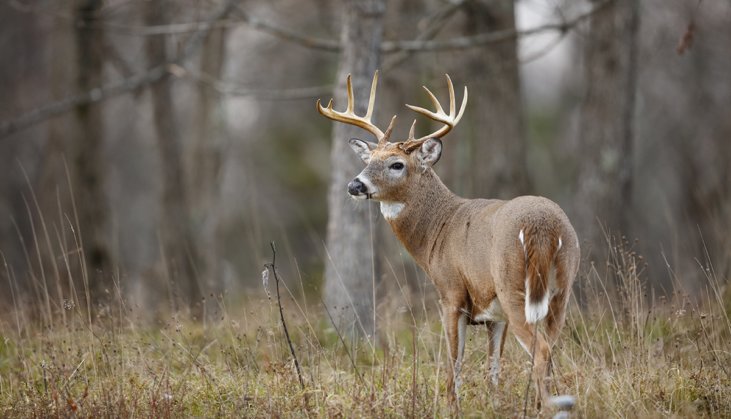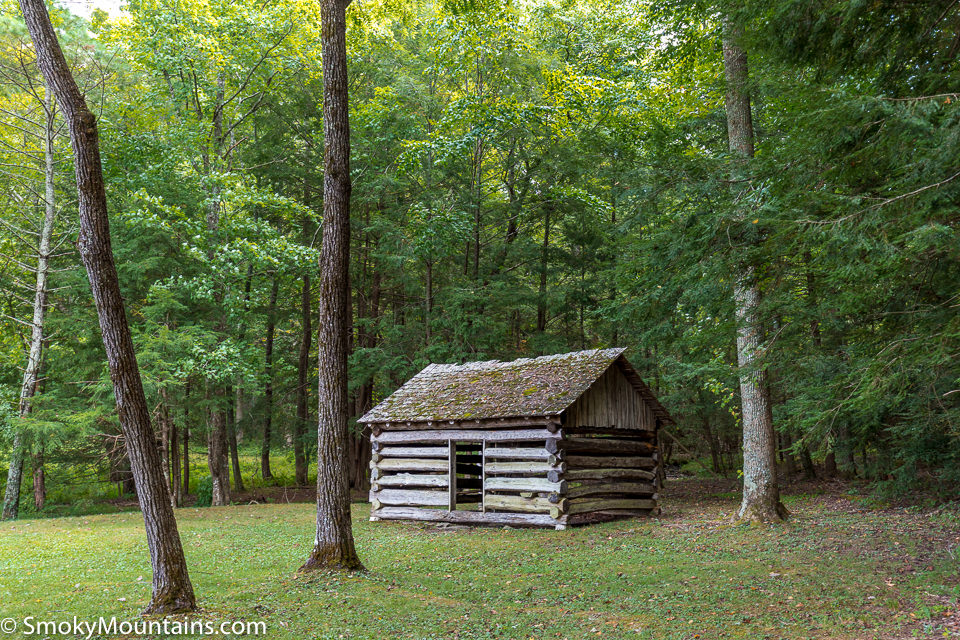The Great Smoky Mountains boast world-class biological diversity. The temperate forests here, besides being a hotbed of botanical variety, also support an incredibly rich roster of wildlife. Great Smoky Mountains National Park—one of the biggest protected areas in the eastern U.S.—is a hugely rewarding destination for nature enthusiasts, offering outstanding wildlife-viewing for the patient and the sharp-eyed.
Here’s an overview of year-round wildlife-watching opportunities in the Great Smokies:
Notable Wildlife of the Great Smokies

Large mammals may get the lion’s share of the attention in the Great Smoky Mountains, but the range also supports some remarkable smaller creatures. The Smokies are widely called the “Salamander Capital of the World” due to the incredible diversity of native salamanders, those glossy, long-tailed amphibians sometimes referred to in the Appalachians as “spring lizards.” (Again, salamanders are amphibians, like frogs and toads, not reptiles, like lizards.) Some 30 species of salamander representing five families call Great Smoky Mountains National Park home, from the snazzily patterned tiger and black-chinned red salamanders to the enormous, fully aquatic hellbender, one of the biggest salamanders in the world.
The great sweep of elevation and habitat and the geographic position of the Great Smokies make these mountains an awesome birdwatching hotspot as well. A whopping 240 or so species of birds have been recorded in Great Smoky Mountains National Park, and new ones are still being logged: In the winter of 2016 and 2017, for example, two striking species—the snowy white Ross’s goose and the long-eared owl with its extravagant “ear” tufts—were observed in the park for the first time.
Two native and one non-native hoofed mammal (ungulate) roam the Great Smokies. The white-tailed deer is widespread and easily seen; its bigger relative, the elk, was hunted out of the Southern Appalachians by the mid-19th century and reintroduced to the park in 2001 and 2002. A bull elk, which in the Smokes may weigh 700 pounds or more, is an especially awe-inspiring creature during the autumn breeding season (or “rut”), brandishing a huge rack of antlers and unleashing his famous bugle.

The non-native (aka exotic) ungulate is the feral hog or “razorback,” hybrid swine descended from escaped domestic pigs and Eurasian wild boar that were intentionally brought to America for hunting purposes. These feral hogs are a major problem in the Southern Appalachians and across much of the Southeast, as they’re ecologically destructive.
Surely the most famous native animal in the Great Smokies is the American black bear. Some 1,500 bears call Great Smoky Mountains National Park home, shaking out to about two bears per square mile. Large male bears, called “boars,” can tip the scales at 800 pounds or more. Despite their intimidating size and strength, black bears mostly feed on plant material and invertebrates, and almost always prefer to avoid confrontations with people—except when they’ve become accustomed to food handouts and scavenged garbage!
Two other large native carnivores are no longer found in the Great Smokies: the puma (or mountain lion) and the red wolf, which the National Park Service unsuccessfully attempted to reintroduce in the 1990s. The red wolf’s slightly smaller relative, the coyote, is common, as is the bobcat, but both are elusive.
Along Smoky Mountain rivers, you may luck out with a sighting of a river otter: a playful, semiaquatic, fish- and crayfish-scarfing member of the weasel family that was trapped out of the Smokies but, like elk, successfully reintroduced.
Tips for Wildlife-Watching in the Smokies

Arming yourself with a pair of binoculars for your visit to Great Smoky Mountains National Park is a great idea. (They can be rented from local outdoor shops/outfitters if you don’t own your own pair.) Take them on the hiking trail with you so you can quickly bring them up to your eyes upon glimpsing a potential critter, and keep them close to hand while driving park roads. A spotting scope is also a great tool, particularly for wildlife-watching from the car; you can prop it against a partly rolled-down window for a steadier view.
Even when you’re not actually spotting animals in the flesh, you can see plenty of wildlife sign along the Smoky Mountain trails if you keep your eyes peeled. Those include footprints in mud, dust, or snow as well as subtler evidence such as tree trunks scraped by deer antlers or gnawed on by black bears, beavers, or porcupines.
Always give wild animals plenty of elbow room: That’s for your safety and theirs, as prompting wildlife to flee can rob them of vital energy. Those binoculars of yours should allow you to enjoy great views without approaching animals too closely.
Prime Wildlife-Watching Destinations in Great Smoky Mountains National Park

You can see animals everywhere and anywhere in Great Smoky Mountains National Park, from the cobbles of low-elevation creeks to the highest mountaintop balds and spruce-fir woods. But your all-around best opportunities come in the large open valleys of Cades Cove and Cataloochee.
Drive or bicycle the Cades Cove Loop, and you’ll have a good chance of seeing whitetails, wild turkeys, and groundhogs out among the fields and groves. This is also one of the most fruitful places in the park to look for black bears—maybe even a mother with her two or three cubs—and meanwhile it’s not unusual to glimpse coyotes here as well, especially in the early morning or evening. (Those windows are the best times to look for wildlife in general.)
The Cataloochee Valley, meanwhile, is the premier place in the park to see elk, as most of the reintroduced Great Smokies herd hangs out here. Morning and evening offer the best opportunities for seeing elk in the fields here. In September and early October, you may get to hear and see bull elk bugling as they round up and defend their harems of cows.
Birdwatching in the Great Smokies

You can see birds all year round in the Great Smokies, though visibility and variety tends to peak during the spring and fall migrations. The park notes that an experienced birdwatcher who covers enough ground may well be able to record 100 species of birds in a day during late April or earl May, when spring migration climaxes. Learning to identify bird calls and songs can hugely expand your detection of different species on a visit to the park.
In fall, hikers in the Great Smokies high country may nab nice views of circling “kettles” of hawks and other raptors as they stage for migration on the updrafts and thermals along the mountain ridges.
Watchable Wildlife in Great Smoky Mountains National Park

Hearing a chorus of wood frogs in late winter or early spring or the wild cry of a pileated woodpecker in the deep woods; watching a whitetail doe lead her spotted fawns across a Cades Cove meadow; marveling at a split-second glimpse of a black bear dashing across Rich Mountain Road—wildlife observations can be some of the most unforgettable experiences on a visit to Great Smoky Mountains National Park. Keep your eyes peeled (and your ears pricked) while you’re exploring here, whatever time of year!




